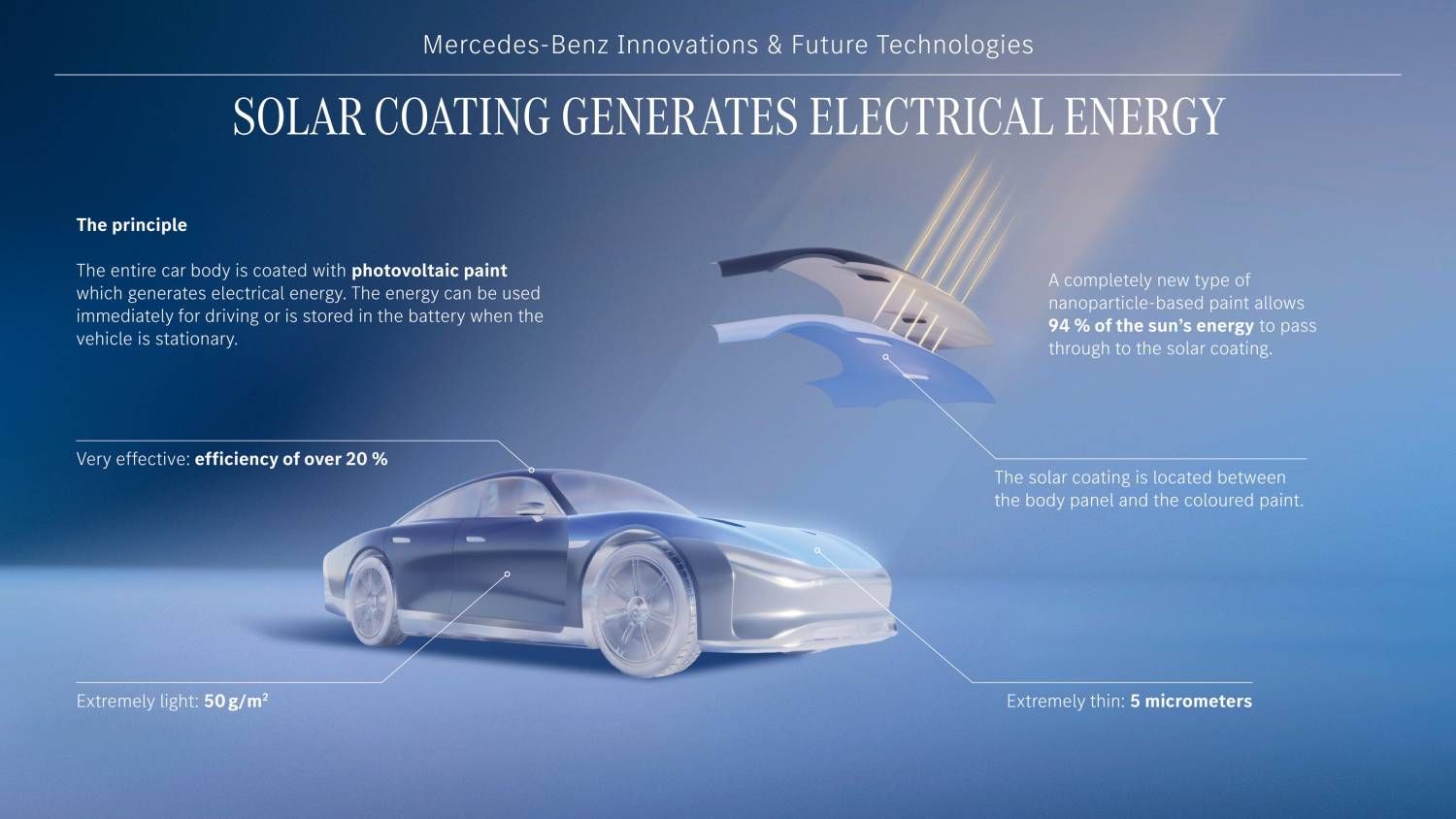Follow us on Google News (click on ☆)
The German manufacturer has unveiled a groundbreaking technology: a solar paint incorporating photovoltaic nanoparticles. This thin layer, weighing just 0.1 pounds (50 grams) per square meter, can convert sunlight into electrical energy with an efficiency of 20%. Comparable to monocrystalline solar panels, it transforms the bodywork of vehicles into a renewable energy source.

Unlike traditional solar panels, which are often bulky and constrained by their orientation, this paint adapts to all shapes and angles of vehicles. As a result, the active surface area increases, allowing electricity to be generated on all parts exposed to sunlight.
The additional range announced for this innovation is impressive. In Los Angeles, a mid-sized SUV could travel up to 12,400 miles (20,000 kilometers) per year solely on solar energy. Even in less sunny regions, like Stuttgart, Mercedes estimates 7,500 miles (12,000 kilometers) of range, with about 60% of daily trips potentially covered by this technology.
This solution also promises significant environmental benefits. Unlike other energy technologies, this paint contains neither silicon nor rare earth elements, which are costly and challenging to extract. Made from non-toxic and recyclable raw materials, it aligns with a more sustainable approach.
In addition to its environmental impact, this paint could address a key challenge: insufficient charging infrastructure. In remote or poorly equipped areas, it would reduce dependence on charging stations while limiting the investments needed for their development.
However, several challenges remain. The efficiency strongly depends on weather conditions and sunlight. Furthermore, dirt or shadows can decrease the effectiveness of the photovoltaic cells. These limitations still require adjustments before large-scale commercialization.
Mercedes is also working on complementary innovations, such as onboard energy management systems. For example, a converter would regulate the energy produced, ensuring consistent voltage and optimizing bidirectional charging.
If this solar paint reaches its potential, it could transform the landscape of electric vehicles by offering increased autonomy, reduced costs, and a smaller ecological footprint. This is an innovation to watch closely, as it seems well-aligned with the objectives of sustainable mobility.